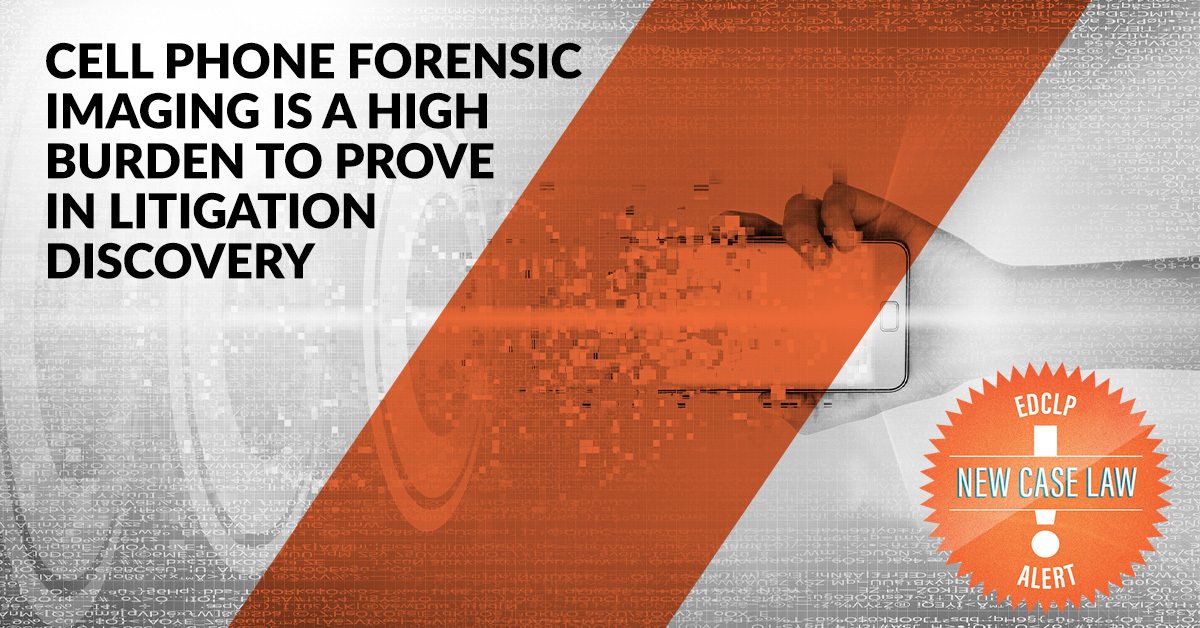E-Discovery
Case Law Alert: Cell Phone Forensic Imaging is a High Burden to Prove in Litigation Discovery
June 17, 2022

To require a producing party to take a forensic image of a data source can be a high burden for a requesting party. When considering how to preserve and collect data, logical collections will be deemed reasonable in the vast majority of scenarios, and a forensic image may only be required in a limited number of situations, as demonstrated in Aminov v. Berkshire Hathaway Guard Insurance.
Why This Case Is Important
To require a producing party to take a forensic image of a data source can be a high burden for a requesting party. When considering how to preserve and collect data, logical collections will be deemed reasonable in the vast majority of scenarios, and a forensic image may only be required in a limited number of situations.
Overview
In this case, the defendant moved to compel the plaintiff to produce his cell phone for forensic imaging due to an alleged modification of specific video files’ metadata.
The defendant’s claim that the video’s metadata was modified was based on its analysis using a free online tool, which reported that “Metadata could have been changed or deleted in the past.”
The defendant did discuss this issue with a forensic consultant, but only used the consultant’s statements to support the notion that the plaintiff’s phone must be examined for a proper metadata evaluation.
Ruling
- No Forensic Examination Needed. The court denied the defendant’s motion due to the defendant not providing adequate justification for forensic imaging. To prove that forensic imaging is needed in civil cases, the moving party must have a basis, such as showing discrepancies in discovery responses or other evidence of improper conduct (i.e., by the producing party).
- Online Metadata Tool. The court took issue with the defendant only using a free online metadata tool as the basis for requesting forensic imaging of the plaintiff’s phone. The court found that the tool was not designed to show metadata alteration; rather it was used to determine if metadata existed. Additionally, the tool’s analysis was not unequivocal, stating only that metadata “could have been changed or deleted” in the past.
- Burden for Forensic Imaging Is High. For civil cases, not criminal, the judge noted that “forensic examinations of computers and cell phones are generally considered a drastic discovery measure, because of their intrusive nature.” Therefore, the court must account for the “undue intrusiveness resulting from inspecting or testing such systems.”

Expert Opinion from David Cohen, Esq., Chair – E-Discovery Group, Reed Smith LLP
Beyond noting the intrusive nature of forensic examination of computers and cellphones, Magistrate Judge Balsara’s opinion underlines the necessity that parties seeking such extraordinary discovery establish a basis beyond mere speculation. Here the request was unsupported by any qualified expert opinion or other evidentiary showing.
Case Law Tip
Want to learn more about recent e-discovery sanctions? Download the Exterro whitepaper, Don't Get Sanctioned Like These Parties!
